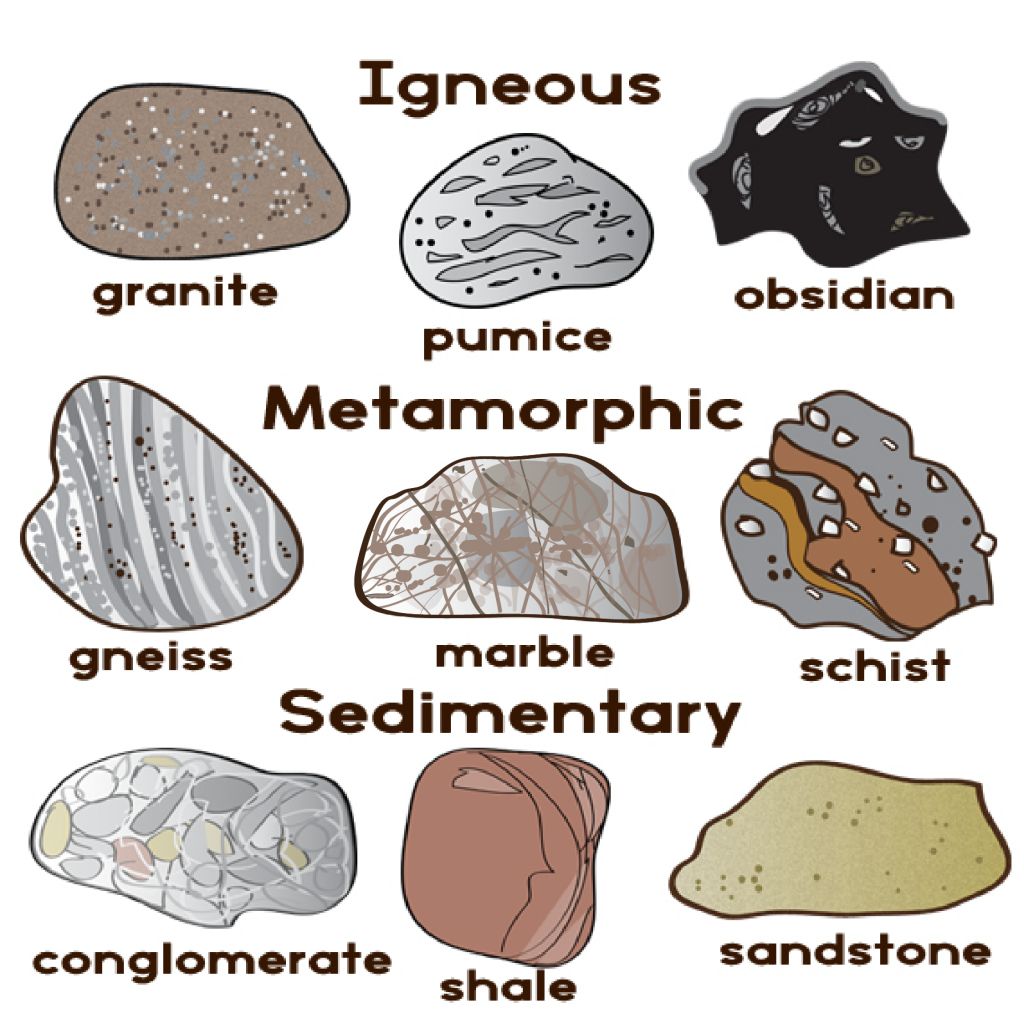Section 3: Classifying Rocks
Rocks have been around since the beginning of Earth’s history, and they take millions of years to form. Geologists can classify a rock according to how the rock formed using clues from the rock’s color and texture. Twenty minerals comprise most of the rocks of the Earth’s crust called rock-forming minerals. Color also provides clues to a rock’s mineral composition. For example, granite is a light-colored rock with high silica content, while basalt is a dark-colored rock low in silica. Texture is the look and feel of the rock’s surface, made up of particles of minerals or other fine rocks called grains.

Rocks are classified into three major groups: igneous rocks, sedimentary rocks, and metamorphic rocks. Igneous rocks are created when magma or lava cools and crystallizes. Sedimentary rocks form when rocks are broken down into smaller pieces or dissolve in water as rocks erode. They also can develop from the remains of plants and animals that are pressed and cemented together. Finally, metamorphic rocks form when existing rock is changed by heat, pressure, or chemical reactions.
 The rock cycle is a series of natural processes that change one type of rock into a different kind of rock. Forces deep inside the Earth and at the surface produce a slow cycle that builds, destroys, and changes the rocks in the crust. Forces at Earth’s surface and deep within Earth drive this cycle, which follows many different pathways. For example, sedimentary rocks form when sediment is deposited and then solidifies as a rock in a process called lithification. Metamorphic rocks form when a preexisting rock is changed by increased temperature and pressure or by adding chemical fluids. Igneous rocks form when magma cools and solidifies or when lava and other rock materials are deposited after an eruption.
The rock cycle is a series of natural processes that change one type of rock into a different kind of rock. Forces deep inside the Earth and at the surface produce a slow cycle that builds, destroys, and changes the rocks in the crust. Forces at Earth’s surface and deep within Earth drive this cycle, which follows many different pathways. For example, sedimentary rocks form when sediment is deposited and then solidifies as a rock in a process called lithification. Metamorphic rocks form when a preexisting rock is changed by increased temperature and pressure or by adding chemical fluids. Igneous rocks form when magma cools and solidifies or when lava and other rock materials are deposited after an eruption.
Review:
- Identify three characteristics of rocks.
- Explain how igneous, sedimentary, and metamorphic rocks form.
- What is the rock cycle?
